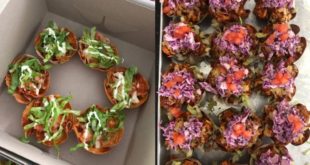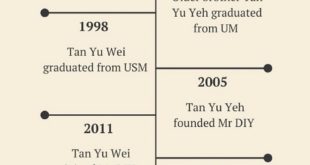Back in 2015, Ling Ting Ming embarked on a trip to San Francisco to search for inspiration and learn about any new technology on the scene.
“Back then in the United States, robotics was a big thing. Just being there inspired me a lot, and that’s why we decided to give a shot at building autonomous technology for robotics.”
At the time, he felt that many jobs were labour-intensive and was confident that robotics would be the solution for the future.
Fast forward to today, the current jobs market is facing a manpower crunch. Many jobs today are also mundane, causing people to avoid taking on such jobs, adding to the workplace problems of finding labour.
According to Ting Ming, robotics can definitely help to solve some of the more labour-intensive, mundane and even dangerous, low skill-based jobs.
This is partly why he founded OTSAW in Silicon Valley and Singapore in May 2015. On a bigger scale, the startup builds robotics solutions that help to improve business processes, safety, and everyday lives.
“Fundamentally, OTSAW is not about people using technology, rather technology being used to help people,” he asserts.
COVID-19 Spawned New Robots
In May 2017, OTSAW launched the first prototype of its O-R3 security robot, which officially hit the market in January 2019.
O-R3 is able to autonomously patrol streets, pathways and open spaces, avoid static and dynamic obstacles, as well as return to base when its energy runs out. Besides outdoor patrol or surveillance at parks, the O-R3 is also good for deployment at oil or chemical plants.

In April last year, OTSAW turned things up a notch and launched a multi-purpose concierge and security robot. Called O-R2, it can facilitate contact tracing and temperature taking in these Covid-19 times.
Unlike O-R3, O-R2 is more suited for indoor spaces such as offices, shopping malls and hotels.
The Covid-19 pandemic also triggered the launch of its disinfection robot O-RX. In fact, OTSAW pioneers the world’s first usage of UV-C LED technology in an autonomous robot as a tool to combat the spread of the virus.
Despite being developed at the peak of Covid-19 last year, the O-RX took only 60 days to complete, from conceptualisation to the final product.
“The intense situation of Covid-19 banded us together to make a LED UV-C disinfection robot that was lab-tested with various bacteria and viruses (including human coronavirus), allowing us to use the technology to keep people (and the environment) safe,” said Ting Ming.
According to OTSAW, the O-RX has achieved a disinfection efficacy of 99.99 per cent within five minutes, at a range of 2.5 meters.
Ting Ming stressed that they use their technology in a socially and environmentally responsible manner. The O-RX in particular, is 70 per cent more energy efficient as compared to conventional disinfection robots that uses mercury lamps.
Such mercury lamps also emit harmful UV-A and UV-B radiation, but O-RX is human-friendly as it is non-cancerous to human skin.
OTSAW adopts a Robot-as-a-Service (RaaS) model, which allows customers to use its robots by paying a monthly subscription over a contract period that is inclusive of maintenance and software support from OTSAW.
“RaaS allows them to enjoy quality service and a seamless customer experience from setup to deployment and operations. Plus, customers do not have to pay a high upfront cost,” explained Ting Ming.
Partners S’pore Gov’t To Trial Its Delivery Robot
OTSAW’s latest product is its delivery robot. Called Camello, it is built to bridge the last-mile gap of the logistics chain, which is often the most inefficient.
Last-mile delivery has been a growing challenge for business to consumer markets. Due to the development of many malls and housing estates in Singapore, there is a big gap in the demand of deliveries in housing estates and shortage of supply from retailers.
“Looking at processes, we were able to calculate the amount of time and cost of finding labour, for driving a vehicle, time sitting in traffic, fuel used, distances travelled, packages that were lost, people that weren’t home, people wanting to return items et cetera,” said Ting Ming.
“Basically, we realised that with last-mile delivery there was so much wastage in every which way you looked at it. We needed to take into consideration and solve the bulk of these issues.”
As part of a new public-private trial, two of the Camello autonomous mobile robots (AMRs) will be used to provide on-demand deliveries to the lift lobbies of seven Waterway Woodcress HDB blocks in Punggol. The trial will pave the way for the wider use of autonomous robot “couriers” in making on-demand deliveries to consumers.
Together with OTSAW, the one-year trial is led by the Infocomm Media Development Authority (IMDA), in partnership with Housing & Development Board (HDB), Land Transport Authority (LTA), Urban Redevelopment Authority (URA), logistics service provider CM Logistics and supermarket chain NTUC FairPrice.
Consumers will enjoy more convenience and faster deliveries, as they can choose when they want their items delivered, instead of adhering to a fixed delivery schedule.


For instance, after buying groceries such as rice or diapers at a supermarket, a consumer can drop off the purchases at a concierge counter to continue shopping or dining and have them delivered to their HDB block at a time the consumer chooses.
Other items that could be delivered through these robot couriers include perishables such as food or flowers, and even controlled items such as medicine.
Through a mobile app, consumers will be notified when the robot is en route to its destination and will receive a confirmation notification that the robot has arrived.
The robot will also provide a QR code for recipients to scan at the collection point via their mobile phones, thus ensuring that only the authorised person will be able to access to the assigned compartment and its contents.
Besides testing the technology and business models for commercial viability, the trial will also assess the infrastructure. This will help township planners when they design the next smart township on how the environment or infrastructure will be built with autonomous robots in mid so that they can co-exist with humans.
“In today’s context, there’s a lot of human labour, using of PMDs and e-bikes that created many safety issues, especially two years ago for the government. There were a lot of accidents and many rules and regulations were put in place to protect pedestrians and the workers. This time, we were able to find an equilibrium for safety in a semi-controlled environment and setting,” said Ting Ming.
To ensure public safety, both autonomous robots have passed the LTA’s safety assessment for the supervised use of autonomous vehicles on public paths. The speed for each robot, which weighs 80 kg (unloaded), is further capped at walking speeds (about 5 km/h). Each robot is also accompanied by a safety officer during the trial period.
Sharing more about the trial, Ting Ming said that he received great interest from the ministers and the public with regards to its robots.
“People talk about the fear of robots, but people were extremely welcoming. Ultimately, it is about educating people to allow them time to understand how we can co-exist together and we are there to help them,” he added.
Plenty Of Room For Robotics To Grow In S’pore

Commenting on the robotics landscape, Ting Ming said that we are still at an infancy stage because there is still so much unknown. However, Singapore harnesses a lot of potential for robotics to flourish here.
“Singapore’s infrastructure age is still young and untouched, leaving a lot of room for further wonderful development, which makes it easier for technology to be retrofit into the buildings, streets, and surroundings areas, above and below ground. We have benefited from some serious forward-thinkers 50 years ago in terms of urban development.”
He added that since labour is expensive, we cannot keep relying on foreign labour. Especially in these Covid-19 times, we have to learn to be self-sufficient.
“One way to pivot is to use technology and the government has also been investing funds into SMEs to help industries to transform, improve productivity using the automation of robots.”
“It’s definitely a place where we will see the pivot happen and at a fast speed, but of course with caution. With the help of the government, it will help create a more inspiring landscape for the robotics industry and all the players involved. I can’t think of a better time than now as we transform and transition.”

According to Ting Ming, more than S$ 10 million has been invested into OTSAW to date. Since they are a deep tech business, they are still in the midst of securing investments and raising funds.
In terms of future business plans, he shared that OTSAW is looking to bring their B2B robots into the F&B and retail markets next.
He noted that there are already several ‘robot baristas’ that help to make coffee on demand. Its efficiency and productivity levels are high, so they are inspired to further innovate and help the industry.
“These industries are very labour-intensive due to long hours. A lot of the workforce in the retail industry are usually feeling fatigued and there is a massive turnover rate. It’s a big problem,” he added.
Featured Image Credit: OTSAW / IMDA



